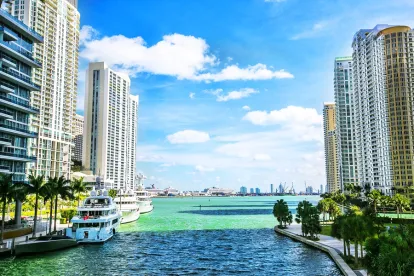On November 1, 2016, the U.S. Environmental Protection Agency (EPA) published its Final National Pollutant Discharge Elimination System (NPDES) Pesticide General Permit for Point Source Discharges from the Application of Pesticides in the Federal Register, which regulates discharges to waters of the United States from the application of biological pesticides and chemical pesticides that leave a residue. 81 Fed. Reg. 75816. The 2016 NPDES Pesticide General Permit (PGP) replaces the 2011 PGP, which expired on October 31, 2016. The PGP applies to the following geographic areas where EPA serves as the NPDES permitting authority:
-
The States of: Massachusetts, New Hampshire, New Mexico, and Idaho;
-
District of Columbia;
-
All U.S. territories except the U.S. Virgin Islands;
-
Federal facilities in Delaware, Vermont, Colorado, and Washington;
-
Discharges in Texas that are not under the authority of the Texas Commission on Environmental Quality, including activities associated with oil and gas exploration (see Appendix A of the Final 2016 PGP for further description); and
-
All areas of Indian Country that are not covered by an EPA-approved permitting program (see Appendix A for Indian Country covered within each EPA Region).
Similar to the 2011 PGP, the 2016 PGP contains additional permit conditions and modifications that some states and tribes added through the Clean Water Act (CWA) Section 401 certification process and/or the Coastal Zone Management Act process. Part 9 of the 2016 PGP provides a detailed breakdown of any additional requirements. Forty-six states have delegated authority to administer state versions of the PGP. The majority of states recently revised and reissued their respective state PGPs for another five-year permit cycle.
The 2016 PGP applies to the same pesticide use patterns covered by the 2011 PGP, which are:
-
Mosquito and Other Flying Insect Pest Control -- control of public health/nuisance and other flying insect pests (including mosquitoes and black flies) that develop or are present during a portion of their life cycle in or above standing or flowing water.
-
Weed and Algae Pest Control -- control of weeds, algae, and pathogens that are pests in water and at water’s edge, including ditches and/or canals.
-
Animal Pest Control -- control of animal pests, including fish, lampreys, insets, mollusks, and pathogens, in water and at water’s edge.
-
Forest Canopy Pest Control -- application of a pesticide to a forest canopy to control the population of a pest species (e.g., insect or pathogen) where, to target the pests effectively, a portion of the pesticide unavoidably will be applied over and deposited to water.
The 2016 PGP requirements are nearly identical to those in the 2011 PGP, with the exception of the following two updates included in the 2016 PGP:
-
Electronic reporting (Part 7.8) -- All reporting under the 2016 PGP (i.e., Notice of Intent (NOI), Annual Report, and Notice of Terminations (NOT) submissions) must be submitted via EPA’s eNOI system to be consistent with EPA’s Electronic Reporting Rule. EPA will make these reports publicly available through a searchable index tool -- eNOI search. More information on electronic reporting, and access to the Central Data Exchange for NOI, Annual Report, and NOT submissions is available here.
-
Updated definition of the National Marine Fisheries Service (NMFS) Listed Resources of Concern -- Following consultation between EPA and NMFS, as required under Section 7 of the Endangered Species Act (ESA), EPA expanded the Listed Resources of Concern to include additional species not included in the 2011 PGP definition. Under Part 1.1.2.4, pesticide discharges that overlap with NMFS Listed Resources of Concern trigger additional NOI requirements to certify that the discharges and discharge-related activities are not likely to adversely affect federally listed “endangered” or “threatened” species, or federally-designated “critical habitat.” Permittees may consult EPA’s PGP NMFS Listed Resources of Concern -- Interactive Mapping Tool to determine whether a discharge activity will overlap with these Resources of Concern. Appendix I provides endangered species instructions for affected permittees. EPA states in the corresponding Fact Sheet for the 2016 PGP that it continues to estimate that less than two percent of the total number of Operators in the PGP coverage areas will need to meet additional permit requirements in order to meet ESA-related provisions.
The 2016 PGP permit conditions went into effect on October 31, 2016, and the PGP will expire in five years on October 31, 2021. 2016 PGP coverage is automatic through January 12, 2017, without the submission of an NOI, but pesticide Operators (i.e., pesticide applicators) must comply with all 2016 PGP conditions as of October 31, 2016. For any discharges commencing on or before January 12, 2017, that will continue after this date, a decision-maker must submit an NOI no later than January 2, 2017, to ensure PGP coverage, and for any discharges subsequent to January 12, 2017, an NOI submission is required no later than 10 days before the first discharge. Table 1-1 outlines which decision-makers must submit NOIs based on the particular pesticide use pattern, location (i.e., if discharging to a designated Outstanding National Resource Water), and acreage thresholds. Table 1-2 provides applicable NOI submission deadlines, including grace periods for NOI filing for discharges in response to a Declared Pest Emergency.
EPA’s webpage for pesticide NPDES permitting includes links to the final 2016 PGP, a related fact sheet, the permitting decision tool, and information on eNOI and ESA procedures.
Commentary
Although the 2016 PGP largely mirrors the 2011 version of the permit, it will be important for decision-makers to familiarize themselves with the new electronic reporting requirements (Part 7.8). EPA’s eNOI system is publicly searchable and could subject PGP permit holders to additional scrutiny by citizens and advocacy groups concerned about potential environmental and public health implications of pesticide applications in their areas. Decision-makers should consult EPA’s PGP NMFS Listed Resources of Concern -- Interactive Mapping Tool and the Alternative PGP Sources of Information for NMFS Listed Resources of Concern to determine where discharges may overlap with these areas and trigger additional permit conditions.


 />i
/>i

